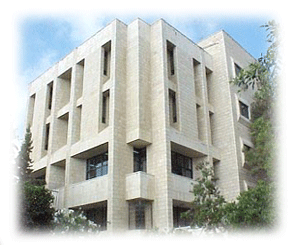DEFINITION
A BIBLIOGRAPHY is a list, often with
descriptive or critical notes, of writings relating to a
particular subject, period or author. It is also a list
of the sources used when writing a report or term paper,
a book, a periodical article, or a pamphlet.
A BIBLIOGRAPHY includes only those
materials that were actually used in the final report.
PURPOSE
The purpose of a Bibliography is to tell the reader
where the information was taken from and where the
reader can go and look for additional information on the
same topic. It enables the reader to quickly identify
the sources and locate them at the end of the research
paper.
ARRANGEMENT
OF ENTRIES:
The BIBLIOGRAPHY entries should provide
information about the title, author, publisher,
publication date and place.
The entries are listed in alphabetical order
according to the author’s last name. If there is more
than one author, only the first name is reversed,
followed by a comma for the second author’s name
(unreversed).
Entries with no author are inserted
alphabetically according to the first word of the title
(disregarding a, an, the). The title should be complete,
including any subtitle.
Bibliographical entries should begin on a new
page of the research paper and are not numbered.
(Reports and Term Papers. Vol. 5 of Learning Library.
Chicago: World Book, Inc., 1986. p. 56.)
There are different style manuals that can
be used in arranging a bibliography. The
MLA (Modern Language Association of America) Handbook
for Writers of Research Papers is one that can be applied.
The MLA Handbook is a guide for writers.
It contains information on how to write a term paper,
i.e. selecting a topic, using the library, outlining, as
well as preparing a bibliography.
STEPS TO BE
CONSIDERED IN PREPARING A BIBLIOGRAPHY
·
In the bibliography, leave a single space within
entries, double space between entries. The first line of
each entry starts on the left margin and all subsequent
lines, if any, are indented five spaces.
·
Dots are used in a bibliographical entry at the end of
each main part – author’s name, title, publication
facts.
·
Underline titles of whole publications, books &
periodicals if the report is typed or handwritten.
·
Titles of whole publications, books & periodicals should
be italicized if the report is produced on a computer.
·
Quotation marks must be used around title of articles.
·
Bibliography entries are arranged alphabetically by
author’s family name. If there is no author, entries are
arranged by title.
·
Two or more works by the same author are indicated by
giving the name of the author for the first entry. For
the subsequent entry, type ten hyphens followed by a
dot, skip two spaces and give the next title.
The ten hyphens
stand for the author’s full name. (Joseph Gilbaldi,
Walter S. Achtert. M L A Handbook for Writers of
Research Papers. 4th ed. New York: Modern
Language Association, 1995.)
The following
examples of bibliographical citations may be used as
guidelines for term papers. They are taken from the MLA
Handbook.
SAMPLE
BIBLIOGRAPHICAL ENTRIES FOR PUBLISHED BOOKS
a. A BOOK WITH A SINGLE
AUTHOR:
Parker, Greg. Introductory Semiconductor Device Physics. New
York: Prentice Hall Inc., 1994.
Russell, Willy. Educating Rita. London: Longman Group Ltd., 1991.
Schoffman, Nachum. There is No truer Truth: The Musical Aspect of
Browning’s Poetry. New York: Greenwood press, 1991.
b. A BOOK WITH TWO OR
MORE AUTHORS:
Rogers, Glyn, Linda Badham. Evaluation in Schools: getting started on
training and implementation. London:
Routledge, 1982.
Zis, George et al. International Economics. London: Longman Group
Ltd., 1988.
c. TWO OR MORE WORKS BY THE
SAME AUTHOR:
Frye, Northrop. Anatomy of Criticism: Four Essays. Princeton:
Princeton Univ. Press, 1973.
----------. The Critical Path: Essay on the Social Context of
Literary Criticism. Bloomington: Indiana Univ. Press
1971.
----------, et al. Morality of Scholarship. Ed. Max Black.
Studies in Humanities. Ithaca, N.Y.: Cornell
Univ. Press, 1967.
d. A BOOK IN SEVERAL VOLUMES
OR PARTS:
Churchill, Winston S. The Age of Revolution. Vol. III of A
History of the English Speaking Peoples. New York: Dodd,
Mead, 1957.
Daiches, David. A Critical History of English Literature. 2 nd
ed. New York: Ronald, 1970. Vol. II.
Parker, William R. Milton: A Biography. 2 vols. Oxford:
Clarendon, 1968.
e. ARTICLES IN REFERENCE
WORKS:
Chiappini, Luciano. “Este, House of”. Encyclopedia
Britannica: Macropaedia. 1985 ed.
Mead, Margaret. “Who’s who of American Women”. 8th ed. (1974
– 75).
f. THE PUBLISHED PROCEEDINGS
OF A CONFERENCE:
Leukocytes and Host Defense. Proc. of a conference on the International
Leukocyte Cultural. 3 – 8 Aug. 1985. New York: Alan
R.Liss Inc., 1986.
g. A BOOK
WITHOUT PLACE OF PUBLICATION, PUBLISHER OR DATE:
Photographic
View Album of Cambridge. [England]: n.p., n.d.
SAMPLE
BIBLIOGRAPHICAL ENTRIES FOR ARTICLES IN PERIODICALS.
a.
AN ARTICLE FROM A
PERIODICAL WITH CONTINUOUS PAGINATION THROUGHOUT THE
ANNUAL VOLUME:
Shomer, Enid. “Reading a Violet Love Poem to the Deaf”. Poetry 157
(1991): 214 – 215.
b.
AN ARTICLE FROM A
PERIODICAL THAT PAGES EACH ISSUE SEPARATELY OR THAT
NUMBERS ONLY ISSUES:
Muller – Christiansen, Konrad. “Stymied in the Aids Struggle”. World
Press Review 40, No.2 (1993): 24 – 25.
Ritvo, Harriet. “Race, Bread, and Myths of Cerigin:
Chillingham Cattle as Ancient Britons”. Representations
No. 39 (1992): 1 –22.
c.
AN ARTICLE FROM A WEEKLY
PERIODICAL OR WEEKLY NEWSPAPER:
Gorman,
Christine. “Are Gay Men Born That Way?” Time 9 Sept.
1991: 54 – 55.
Lederman, Douglas. “Athletic Merit vs. Academic Merit”. Chronicle of
Higher Education 30 Mar. 1994: A 37
–38.
d.
AN ARTICLE FROM A MONTHLY
PERIODICAL:
Graham, Mary. “The quiet Drug Revolution”. Atlantic January 1991: 34-40.
e.
AN ARTICLE FROM A DAILY
NEWSPAPER:
Feder, Barnaby J. “For Job Seekers, A Toll – Free Gift of Expert
Advice”. New York Times 30 Dec. 1993, natl. ed.:
C1+
Note: Every newspaper is
normally divided into sections labeled A, B, C etc. and
paginated. A section letter is part of each page number
e.g. A1, C5.
Newspaper articles are often not printed on consecutive
pages. An article might begin on page 1 and continue on
page 10. For such articles write the page number and a
plus sign C5+.
SAMPLE
BIBLIOGRAPHICAL ENTRIES FOR NON PRINT MEDIA
a.
FILMS:
It’s a Wonderful Life. Dir. Frank Capra. Perf. James
Stewart, Donna Reed, Lionel Barrymore, and Thomas
Mitchell. PKO, 1946.
A film entry usually begins with a title underlined and
includes the director, distributor and the year.
b.
CD – ROM:
The oxford English Dictionary. 2nd ed. CD –ROM.
Oxford: Oxford University Press, 1992.
If you are citing a part of the work, such as an
article, an essay, a poem or a short story, enclose the
title in quotation marks.
“Albatross”. The Oxford English Dictionary. 2nd
rd. CD – ROM. Oxford: Oxford University Press, 19992.
c.
RECORDINGS
Frost, Robert. Robert Frost Reads His Poetry.
Caedmon, XC 783, 1952.
Holiday, Billie. Essential Billie Holiday. Verve, 68410,
1961.
d.
VIDEOCASSETTES:
It’s a Wonderful Life. Dir. Frank Capra. Perf. James
Stewart, Donna Reed, Lionel Barrymore, and Thomas
Mitchell. PKO, 1946.Videocassette. Republic, 1988.
Cite a videocassette like a film but include the original
release date and the republication date.
e.
ELECTRONIC JOURNALS:
Lindsay, Robert K. “Electronic Journals of Proposed
Research” E Journal 1.1 (1991): n. pag. Online.
Internet. 10 Apr. 1991.
f.
AN ELECTRONIC TEXT:
Shakespeare, William. Hamlet. The Works of William
Shakespeare. Ed. Arthur H. Bullen. Stratford Town
Ed.Statford – on –Avon: Shakespeare Head, 1911. Online.
Dartmouth Coll. Lib. Internet. 26 Dec. 1992.
GLOSSARY
|
Article |
مقالة |
|
Bibliography |
البيبلوغرافيا |
|
Citation |
ذكر لمرجع |
|
Conference |
مؤتمر |
|
Entries |
مداخل،مادة مدرجة |
|
Guidelines |
توجهات |
|
Hyphen |
شرطة بين جزئي الكلمة |
|
Indented |
ترك فراغ في بداية السطر |
|
Inserted |
مدرج |
|
Proceedings |
أوراق مؤتمر |
|
Reversed |
ترتيب معكوس |
|
Subsequent |
التالي |
|
Systematic |
منهاجي |
|
Attention
Entries in a
bibliography are divided into sections:
books, periodical articles, and non-print
media. The entries in each section are
arranged in one list in alphabetical order
according to author or title. |








